Table Of Contents
Are you wondering how to paint new plaster and achieve a flawless finish?
This article explores everything you need to know about painting new plaster, from the recommended drying time to the types of paint that can be used. We will also discuss the preparation steps and tips for a smooth painting process.
Whether you are a DIY enthusiast or a professional painter, this article will provide you with valuable insights to ensure a successful painting project.

What Is Plaster?
Plaster is a versatile building material used for coating walls and ceilings, providing a smooth and durable finish.
Plaster typically consists of a mixture of gypsum, lime, sand, and water, creating a paste-like substance that hardens when dry. It is applied in layers to create a solid surface that can be painted or decorated further.
The application of plaster can be done manually using a hawk and trowel or through modern techniques like spray-on plaster. This material is essential in construction for providing a level base for painting and other wall finishes as well as for its fire-resistant and sound-absorbing properties.
Plaster is commonly used in residential and commercial buildings for creating decorative moldings, ornamental designs, and textured finishes on walls and ceilings.
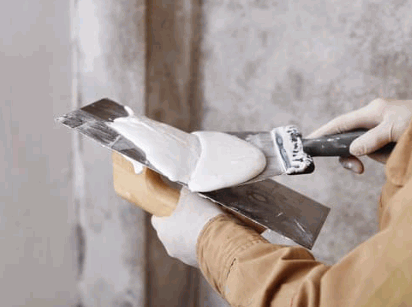
What Is New Plaster?
New plaster refers to freshly applied plaster that has not fully dried or cured, requiring specific treatment before painting.
When dealing with new plaster, it is essential to understand its unique characteristics. New plaster is often softer and more absorbent than fully cured plaster, making it crucial to prepare it properly for painting. To do this, make sure to apply a primer specifically designed for fresh plaster. This primer helps seal the surface, preventing excessive absorption of paint and ensuring a smooth finish.
Another important aspect is allowing the new plaster to dry thoroughly before painting. Rushing this process can lead to paint peeling, cracking, or not adhering properly. It is generally recommended to let the plaster cure for at least a couple of weeks before applying any paint.
Find out more: How Much Does Venetian Plastering Cost
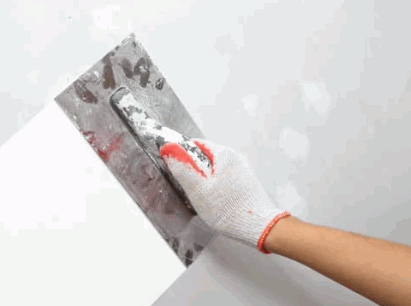
Can You Paint New Plaster?
Painting new plaster is possible but requires proper preparation and adherence to specific guidelines to ensure a successful finish.
One crucial step in painting fresh plaster is applying a mist coat. This diluted layer of emulsion helps the paint adhere better and prevents it from peeling off. In terms of choosing the right paint for new plaster, opting for a breathable emulsion is key to allowing moisture to escape, and preventing dampness issues. Utilizing a primer specifically designed for fresh plaster can enhance the durability and coverage of the final paint layers.
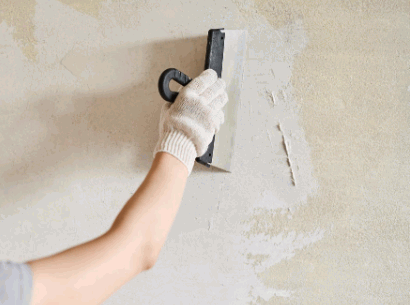
What Is The Recommended Drying Time For New Plaster?
The recommended drying time for new plaster varies depending on factors such as room temperature, humidity levels, and plaster thickness.
Room temperature plays a crucial role in how fast or slow plaster dries. Lower temperatures can significantly prolong the drying process, while higher temperatures promote quicker drying. Ideally, the room temperature should be around 20-25°C for optimal drying. Additionally, humidity levels also impact drying time; higher humidity can slow down the evaporation of water from the plaster. It's recommended to keep humidity levels below 70% to aid in efficient drying.
What Are The Factors That Affect The Drying Time Of New Plaster?
Several factors can influence the drying time of new plaster, including ventilation, room temperature, humidity, and the thickness of the plaster application.
Proper ventilation plays a crucial role in expediting the drying process, as fresh air circulation helps in carrying moisture away from the surface. Maintaining an optimal room temperature promotes faster evaporation of water content present in the plaster. High humidity levels can significantly slow down drying time, leading to potential issues such as mold growth and poor adhesion for paint. The thickness of the plaster layer also impacts drying; thicker applications take longer to dry as the inner layers struggle to release trapped moisture.
What Types Of Paint Can Be Used On The New Plaster?
Various types of paint can be used on new plaster, including emulsion, acrylic, latex, and oil-based paints, each offering unique characteristics and benefits.
Emulsion paint, also known as water-based paint, is a popular choice for new plaster due to its quick drying time, easy application, and low odor. It provides a smooth finish and is available in various finishes such as matt, silk, and satin.
Acrylic paint is another excellent option known for its durability, quick drying, and resistance to fading. It works well on new plaster walls and ceilings and is suitable for high-traffic areas.
Latex paint, a type of water-based paint, is easy to clean up with soap and water, making it ideal for interior surfaces. It offers good coverage and is less likely to crack or peel.
Oil-based paint, while less common nowadays, is known for its durability and high sheen. It provides a hard-wearing finish that is suitable for surfaces like trim, doors, and cabinets.

What Is Emulsion Paint?
Emulsion paint is a popular choice for painting walls and ceilings, known for its durability, ease of application, and wide range of available colours.
Its composition typically includes water, binding agents, pigments, and additives that enhance properties like washability and coverage. Emulsion paint is favored for its quick drying time, making it an ideal option for those looking to finish a project efficiently. Its matte finish is great for concealing imperfections on surfaces, especially on new plaster, providing a smooth and elegant look.
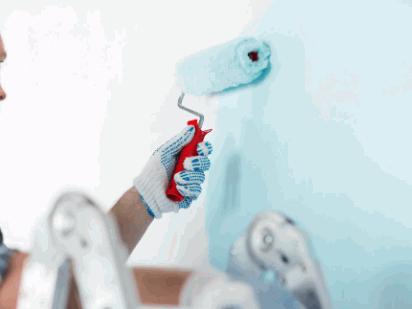
What Is Acrylic Paint?
Acrylic paint is a versatile and fast-drying paint type that offers excellent adhesion to new plaster surfaces, making it an ideal choice for interior painting projects.
One of the key properties of acrylic paint is its water-based formulation, which not only makes it easy to clean up but also ensures quick drying times, allowing for faster project completion. The wide range of color options available in acrylic paints makes it a favorite among artists and DIY enthusiasts alike. Acrylic paint is known for its durability and resistance to cracking and yellowing over time, providing long-lasting results. When applying acrylic paint on new plaster, it is important to properly prepare the surface by priming it first to ensure optimal adhesion and a smooth finish.
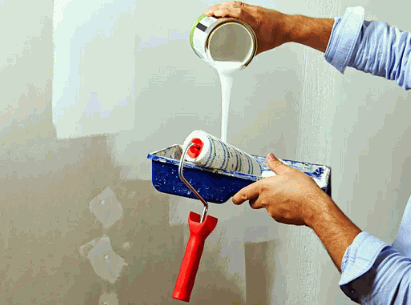
What Is Latex Paint?
Latex paint, also known as water-based paint, is a popular choice for painting new plaster due to its quick drying time, low odour, and easy cleanup.
Latex paint is preferred for new plaster surfaces as it provides a smooth finish with excellent adhesion, preventing peeling or cracking over time. This type of paint is highly versatile and suitable for various surfaces such as walls, ceilings, and trim. Its durability and resistance to fading make it a practical choice for long-lasting results. Additionally, latex paint comes in a wide range of colors and sheens, offering flexibility for different design preferences. When applying latex paint on new plaster, proper surface preparation is essential to ensure a flawless and lasting paint job.

What Is Oil-based Paint?
Oil-based paint offers a durable and high-gloss finish for new plaster surfaces but requires longer drying times and proper ventilation during application.
Despite the longer drying times, oil-based paint is preferred for its strong resistance to wear and tear, making it ideal for high-traffic areas. The glossy finish adds a luxurious touch, enhancing the overall aesthetic of the space. It is crucial to ensure good ventilation when working with oil-based paint, as the fumes can be potent. Applying thin layers with a high-quality brush or roller helps in achieving a smooth and professional-looking result. Be prepared for the added cleanup time, as oil-based paints require mineral spirits or paint thinner for cleaning brushes and spills.
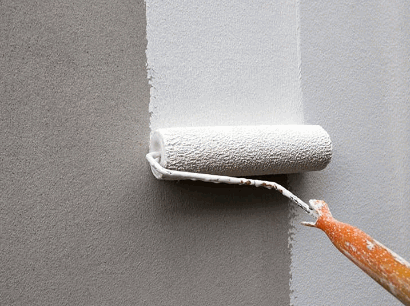
How To Prepare New Plaster For Painting?
Preparing new plaster for painting involves using specific tools and materials to ensure a smooth and long-lasting finish.
Primarily, prior to painting new plaster surfaces, it is crucial to start by priming the walls or ceilings to promote adhesion and prevent the paint from soaking into the porous surface. This step involves applying a primer that is specifically designed for new plaster to create a suitable base for the paint to adhere to.
Following this, sanding the plaster is essential to smooth out any imperfections, bumps, or rough areas that may affect the final paint application. Once the surface is primed and sanded, it is important to seal the plaster with a sealant to further enhance its durability and prevent moisture absorption.
By meticulously following these steps, you can ensure a flawless and professional-looking paint finish on your new plaster surfaces.
What Tools And Materials Do You Need?
To prepare new plaster for painting, you will need tools such as brushes, rollers, sandpaper, primers, and sealants to achieve a professional finish.
Brushes play a crucial role in applying paint evenly on the plaster surface, ensuring a smooth and flawless result. Rollers are excellent for covering larger areas quickly and efficiently, making them a time-saving tool. Sandpaper is essential for smoothing out imperfections and rough spots on the plaster before painting, creating a uniform surface for better adhesion.
Primers act as a base coat to enhance paint adhesion to the plaster, promoting durability and a more vibrant color payoff. Sealants help seal the porous surface of the plaster, preventing moisture damage and ensuring the longevity of the paint job.

What Steps Do You Need To Follow For Preparation?
The preparation of new plaster involves steps such as cleaning, priming, applying mist coats, and ensuring proper ventilation to facilitate the painting process.
- Before priming, ensure that the new plaster is completely dry. Use a damp cloth to wipe away any dust or debris that may have settled on the surface.
- Next, choose a high-quality primer specifically designed for new plaster. Apply the primer evenly using a paint roller or brush, focusing on the corners and edges.
- After priming, mix a mist coat using emulsion paint diluted with water. Apply this coat thinly to help the paint bond well with the plaster.
- After the mist coat has dried, inspect the surface for any imperfections or areas that may require touch-ups before proceeding with the final painting.
What Are The Tips For Painting New Plaster?
Achieving a smooth finish when painting new plaster requires attention to detail, proper technique, and adherence to best practices.
When painting new plaster, it's crucial to start with a high-quality primer to ensure proper adhesion of the paint.
- The brush technique is essential for cutting along edges and corners, while the roller technique helps achieve a uniform finish on larger surfaces.
- Applying a mist coat before the final coats can help seal the porous surface of the plaster and improve paint adhesion.
- Allow sufficient drying times between coats to avoid tackiness or peeling.
Common mistakes to avoid include overloading the brush or roller, skipping the mist coat, and rushing the drying process.
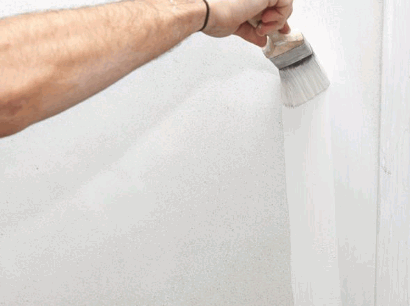
How To Achieve A Smooth Finish?
To achieve a smooth finish when painting new plaster, ensure proper surface preparation, use high-quality tools, apply mist coats, and allow sufficient drying time between layers.
Proper surface preparation involves cleaning the plaster surface thoroughly to remove any dust or debris. Fill any imperfections with a suitable filler and sand smooth. Use high-quality tools such as good-quality brushes or rollers for an even application of paint. Applying mist coats before the final coats will help the paint adhere better to the plaster. It is crucial to allow sufficient drying time between each coat to prevent cracking or uneven finish. Patience is key in achieving a professional result when painting new plaster.
What Are The Common Mistakes To Avoid?
Common mistakes when painting new plaster include applying too thick coats, skipping priming, rushing the drying process, and neglecting proper ventilation.
Applying too thick coats can lead to uneven drying, resulting in a patchy finish. To avoid this issue, it's important to use multiple thin coats rather than one thick layer.
Skipping priming can cause the paint to not adhere properly to the plaster surface, leading to peeling or flaking. To prevent this, always prime the plaster before painting to create a smooth and stable base.
Rushing the drying process can cause the paint to not bond well with the plaster, resulting in poor adhesion and potentially causing the paint to peel off over time. Allow each coat to dry completely as per the manufacturer's instructions.
Neglecting proper ventilation can lead to moisture buildup, which may affect the drying time of the paint and result in a less durable finish. Ensure good airflow in the room by opening windows or using fans during and after painting.


